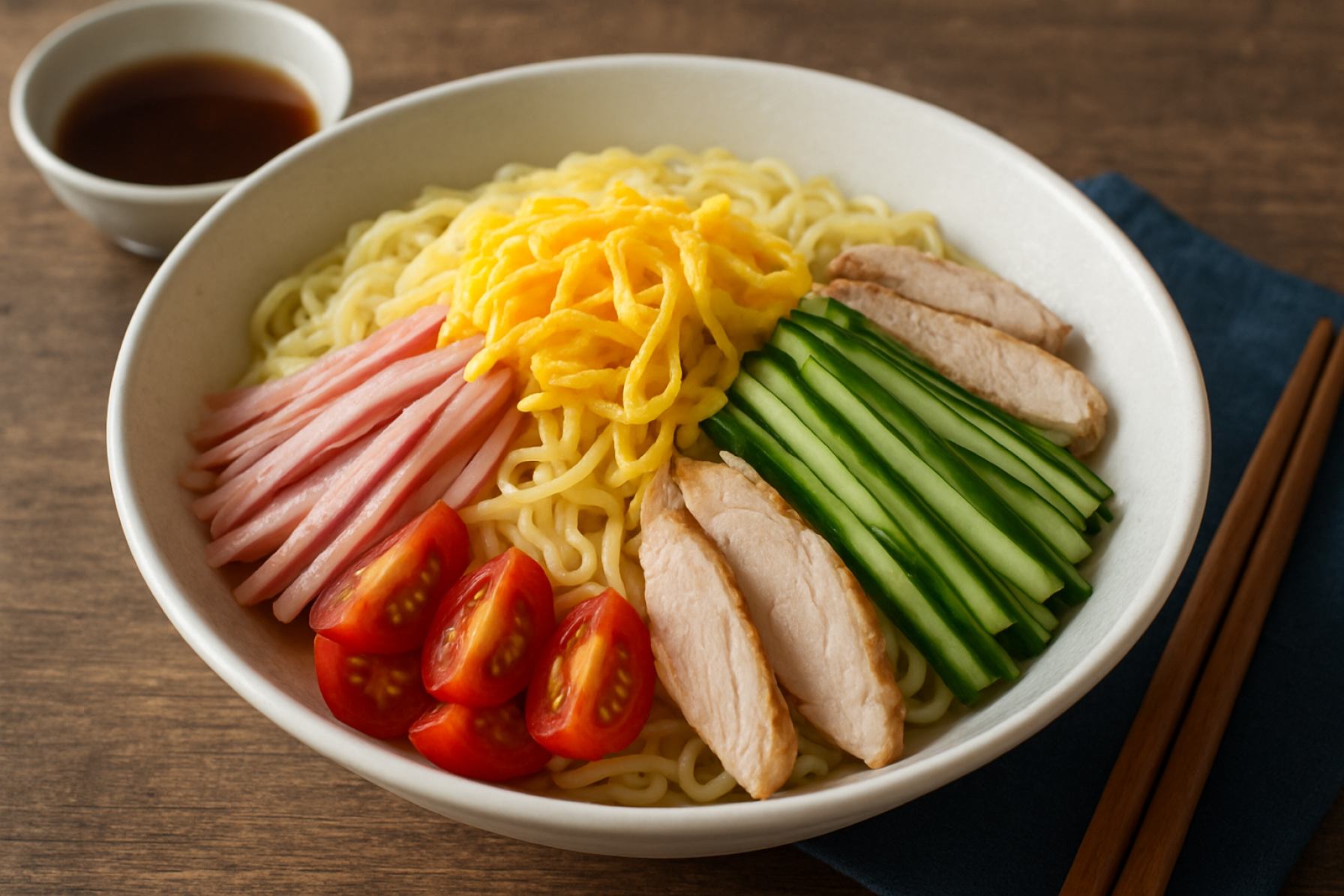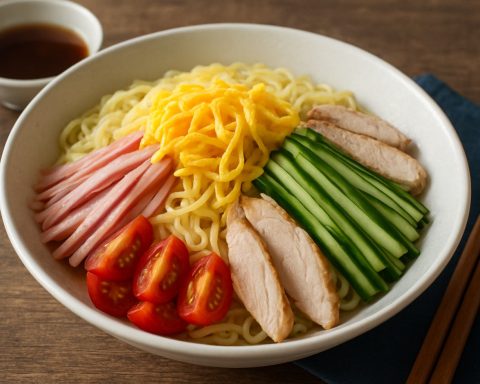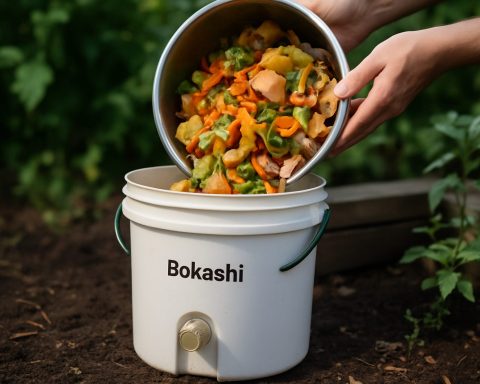Discover Hiyashi Chuka: The Chilled Japanese Noodle Dish That Redefines Summer Dining. Explore Its Origins, Flavors, and Why It’s a Must-Try Seasonal Classic.
- Introduction to Hiyashi Chuka
- The History and Cultural Significance
- Essential Ingredients and Variations
- Step-by-Step Preparation Guide
- Popular Toppings and Flavor Combinations
- Serving Suggestions and Presentation Tips
- Health Benefits and Nutritional Insights
- Where to Find Hiyashi Chuka in Japan and Abroad
- Tips for Making Hiyashi Chuka at Home
- Sources & References
Introduction to Hiyashi Chuka
Hiyashi Chuka is a popular Japanese summer dish consisting of chilled ramen noodles topped with a colorful array of ingredients such as sliced cucumber, ham, egg crepe, tomatoes, and sometimes seafood or chicken. The dish is typically served with a tangy soy-based or sesame-based dressing, making it both refreshing and satisfying during the hot months. Originating in Japan in the early 20th century, Hiyashi Chuka was developed as a seasonal alternative to hot ramen, offering a lighter and cooler option for diners. Its name literally translates to “chilled Chinese,” referencing the Chinese-style wheat noodles used as the base, though the toppings and flavors have been adapted to suit Japanese tastes.
The appeal of Hiyashi Chuka lies in its versatility and visual presentation. Each component is prepared and arranged separately, allowing for a variety of textures and flavors in every bite. The dish is highly customizable, with regional and personal variations influencing the choice of toppings and sauces. In Japan, Hiyashi Chuka is widely available in restaurants and convenience stores during the summer, and it is also a popular homemade meal. Its balance of carbohydrates, protein, and fresh vegetables makes it a nutritious option as well. The dish’s enduring popularity is a testament to its adaptability and the way it captures the essence of Japanese summer cuisine. For more on Japanese food culture, see Ministry of Agriculture, Forestry and Fisheries of Japan.
The History and Cultural Significance
Hiyashi Chuka, a chilled ramen dish topped with a colorful array of ingredients, emerged in Japan during the early 20th century as a response to the country’s hot and humid summers. Its origins are often traced to Chinese restaurants in Sendai and Tokyo, where chefs sought to adapt traditional ramen for warmer weather by serving noodles cold and garnishing them with refreshing toppings such as cucumber, ham, egg, and tomato. The dish quickly gained popularity, becoming a seasonal staple in Japanese households and eateries by the mid-20th century.
Culturally, Hiyashi Chuka reflects Japan’s openness to culinary adaptation and innovation. While ramen itself was imported from China, Hiyashi Chuka is a distinctly Japanese creation, blending Chinese-style noodles with local ingredients and flavors. The dish is typically enjoyed from June to August, and its appearance in restaurants and convenience stores signals the arrival of summer. This seasonal association has made Hiyashi Chuka a nostalgic comfort food for many Japanese people, evoking memories of family gatherings and school lunches during the summer break.
The dish’s enduring popularity is also tied to its visual appeal and versatility. The vibrant arrangement of toppings is not only appetizing but also embodies the Japanese aesthetic principle of wabi-sabi, finding beauty in simplicity and impermanence. Today, Hiyashi Chuka continues to evolve, with regional and personal variations reflecting Japan’s dynamic food culture. For more on the cultural context of Japanese cuisine, see Ministry of Agriculture, Forestry and Fisheries of Japan.
Essential Ingredients and Variations
Hiyashi Chuka is celebrated for its vibrant presentation and refreshing flavors, achieved through a careful selection of essential ingredients and a wide array of regional and personal variations. The foundation of Hiyashi Chuka is chilled ramen noodles, typically made from wheat flour, which provide a chewy and satisfying base. The noodles are topped with a colorful assortment of julienned vegetables such as cucumber, carrot, and tomato, as well as proteins like ham, shredded chicken, or thinly sliced omelet (kinshi tamago). Common garnishes include pickled ginger, sesame seeds, and nori strips, which add both visual appeal and layers of flavor.
The dish’s signature tangy-sweet sauce is usually a blend of soy sauce, rice vinegar, sugar, sesame oil, and sometimes a touch of mustard or chili oil for heat. This dressing is poured over the assembled ingredients just before serving, ensuring the noodles remain cool and the toppings retain their crispness. While the classic version is widely enjoyed, regional and household variations abound. In some areas, seafood such as shrimp or imitation crab is added, while others may incorporate seasonal vegetables or tofu for a vegetarian twist. The sauce itself can also vary, with some recipes favoring a sesame-based (goma-dare) dressing over the standard soy-vinegar blend.
These variations reflect the adaptability of Hiyashi Chuka to local tastes and ingredient availability, making it a beloved summer dish across Japan. For more on traditional Japanese noodle dishes and their ingredients, see Ministry of Agriculture, Forestry and Fisheries of Japan.
Step-by-Step Preparation Guide
Preparing Hiyashi Chuka at home involves several steps, each contributing to the dish’s refreshing flavor and vibrant presentation. Begin by boiling Chinese-style wheat noodles (chukamen) according to package instructions. Once cooked, drain and rinse the noodles under cold running water to halt cooking and remove excess starch. Chill the noodles thoroughly in the refrigerator or over ice.
While the noodles cool, prepare the toppings. Common choices include thinly sliced cucumber, julienned ham, shredded cooked chicken, strips of omelet (tamagoyaki), tomatoes, and sometimes imitation crab or boiled shrimp. Arrange each topping in neat, colorful sections for visual appeal.
Next, make the sauce. A classic tare combines soy sauce, rice vinegar, sugar, sesame oil, and a touch of mustard or ginger. Whisk these ingredients together until the sugar dissolves. Some variations add dashi or chicken stock for extra umami. Chill the sauce before serving.
To assemble, place the cold noodles in a shallow bowl or plate. Artfully arrange the toppings on top, keeping each ingredient separate. Pour the chilled sauce over the noodles just before eating, or serve it on the side for dipping. Garnish with sesame seeds, nori strips, or pickled ginger if desired.
For a detailed recipe and ingredient proportions, refer to resources like Kikkoman Corporation and Nissin Foods, which offer step-by-step instructions and tips for perfecting this summer favorite.
Popular Toppings and Flavor Combinations
Hiyashi Chuka is celebrated for its vibrant array of toppings, which not only add visual appeal but also create a harmonious balance of flavors and textures. The most common toppings include thinly sliced ham or cooked chicken, julienned cucumber, shredded omelet (kinshi tamago), and tomato wedges. These ingredients provide a refreshing contrast to the chilled noodles and tangy sauce. Other popular additions are imitation crab sticks, boiled shrimp, and bean sprouts, which enhance the dish’s protein content and crunch.
For those seeking a vegetarian option, tofu strips or extra vegetables such as carrots and bell peppers are frequently used. Pickled ginger (beni shoga) and sesame seeds are often sprinkled on top for an extra layer of flavor and aroma. The interplay between the savory meats, crisp vegetables, and the sweet-sour dressing—typically made from soy sauce, rice vinegar, sugar, and sesame oil—creates a multidimensional taste experience.
Regional and personal variations abound. In some areas, spicy mustard (karashi) or a dollop of mayonnaise is served on the side, allowing diners to customize the flavor profile to their liking. The flexibility of toppings and sauces is a key reason for Hiyashi Chuka’s enduring popularity during the summer months, as it can be easily adapted to suit individual preferences and seasonal ingredients (Ministry of Agriculture, Forestry and Fisheries of Japan).
Serving Suggestions and Presentation Tips
Serving Hiyashi Chuka is as much about visual appeal as it is about taste. Traditionally, the dish is presented in a shallow, wide bowl or plate to showcase the vibrant array of toppings. Arrange the chilled ramen noodles in the center, then artfully fan out the toppings—such as julienned cucumber, strips of ham, shredded omelet, tomatoes, and sometimes seafood or chicken—around the noodles in separate, colorful sections. This not only highlights the freshness of each ingredient but also allows diners to mix and match flavors as they eat.
For an authentic touch, drizzle the tangy soy-based or sesame-based dressing over the noodles just before serving, or serve it on the side so guests can add their preferred amount. Garnishing with pickled ginger, toasted sesame seeds, or a sprinkle of nori strips adds both flavor and visual contrast. To keep the dish refreshingly cold, some restaurants even serve the noodles on a bed of ice or chill the serving plates beforehand, especially during the peak of summer Japan National Tourism Organization.
Pairing Hiyashi Chuka with light accompaniments, such as edamame or a simple miso soup, can round out the meal without overpowering the delicate flavors. For a modern twist, consider offering a variety of sauces or additional toppings like avocado, radish sprouts, or spicy chili oil, allowing for a more personalized dining experience Kikkoman Corporation.
Health Benefits and Nutritional Insights
Hiyashi Chuka, a chilled Japanese noodle dish typically enjoyed during the summer, offers a range of health benefits and notable nutritional qualities. The foundation of Hiyashi Chuka is usually wheat-based ramen noodles, which provide carbohydrates for energy. The dish is topped with a colorful array of vegetables such as cucumber, tomato, and carrots, contributing dietary fiber, vitamins A and C, and essential minerals. These fresh vegetables not only enhance the dish’s visual appeal but also support digestive health and immune function.
Protein is another key component, as Hiyashi Chuka often includes sliced ham, shredded chicken, or boiled eggs. These ingredients supply high-quality protein necessary for muscle maintenance and repair. The inclusion of eggs also adds choline and vitamin D, while lean meats contribute iron and B vitamins. The sauce, typically a blend of soy sauce, rice vinegar, sesame oil, and sometimes a touch of sugar, is low in saturated fat and provides umami flavor without excessive calories. However, sodium content can be moderate to high, so those monitoring salt intake should be mindful of the dressing quantity.
Overall, Hiyashi Chuka is a balanced meal that can be easily adapted for various dietary needs, including vegetarian or gluten-free versions. Its emphasis on fresh, raw vegetables and lean proteins makes it a nutritious choice for a light yet satisfying meal, especially in warmer months. For more on Japanese dietary guidelines and healthy eating, refer to the Ministry of Agriculture, Forestry and Fisheries of Japan.
Where to Find Hiyashi Chuka in Japan and Abroad
Hiyashi Chuka, a beloved Japanese cold noodle dish, is widely available across Japan, especially during the hot summer months. In Japan, you can find Hiyashi Chuka at a variety of establishments, including ramen shops, casual diners (shokudo), and family restaurants. Many chains such as Yayoiken and Sukiya offer seasonal Hiyashi Chuka menus from late spring through early autumn. Department store food halls and convenience stores like Lawson and 7-Eleven Japan also sell ready-to-eat versions, making it easy for locals and visitors to enjoy the dish on the go.
Outside Japan, Hiyashi Chuka can be found in Japanese restaurants in major cities with significant Japanese communities, such as Los Angeles, New York, London, and Sydney. Many authentic ramen shops and izakayas abroad, like Ippudo and Wagamama, occasionally feature Hiyashi Chuka as a summer special. Additionally, Asian supermarkets in North America, Europe, and Australia often stock Hiyashi Chuka kits or ingredients, allowing enthusiasts to prepare the dish at home. While not as ubiquitous as in Japan, the growing popularity of Japanese cuisine worldwide has made Hiyashi Chuka increasingly accessible to international diners.
Tips for Making Hiyashi Chuka at Home
Preparing Hiyashi Chuka at home allows for customization and freshness, but a few key tips can elevate your dish. First, choose high-quality ramen noodles specifically labeled for cold dishes, as their texture holds up best after chilling. Cook the noodles just until al dente, then rinse them thoroughly under cold water to stop the cooking process and remove excess starch, ensuring a springy bite.
For toppings, slice vegetables such as cucumber, carrot, and tomato into thin, uniform strips for both visual appeal and ease of eating. Protein options like ham, poached chicken, or shrimp should also be cut into bite-sized pieces. Traditional garnishes like shredded egg crepe (kinshi tamago) and pickled ginger add color and flavor contrast.
The sauce is central to Hiyashi Chuka’s flavor. A classic dressing combines soy sauce, rice vinegar, sugar, sesame oil, and a touch of mustard. Adjust the balance of sweet, salty, and tangy elements to your taste. Chill the sauce thoroughly before serving, and toss the noodles with a small amount to prevent sticking, reserving the rest for drizzling at the table.
Assemble the dish just before serving to maintain the crispness of the vegetables and the chewiness of the noodles. For an extra touch, sprinkle toasted sesame seeds or nori strips on top. For more detailed guidance, consult resources like Kikkoman Corporation and Nissin Foods.
Sources & References
- Ministry of Agriculture, Forestry and Fisheries of Japan
- Kikkoman Corporation
- Nissin Foods
- Japan National Tourism Organization
- Yayoiken
- Sukiya
- Lawson












